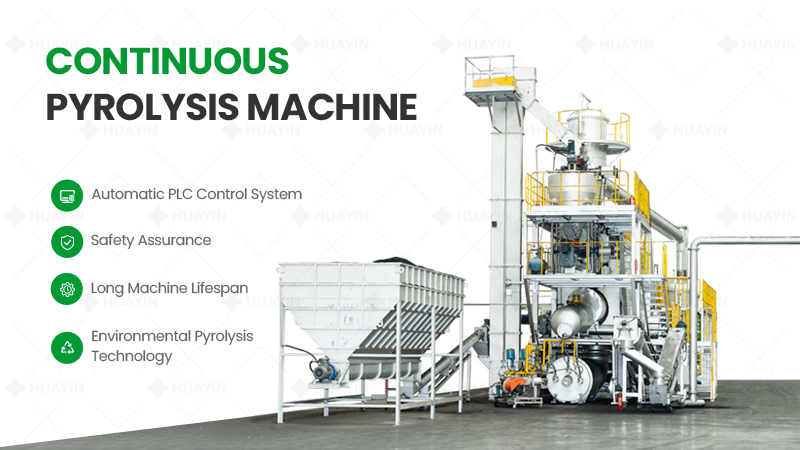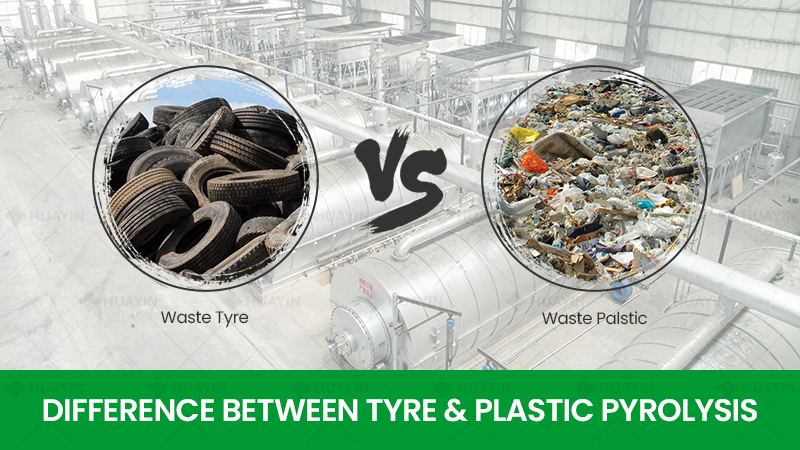The recycling of waste tires is a worldwide problem. Since rubber products cannot be reused after two or three reuses, pyrolysis—the decomposition of hydrocarbons at high temperatures—is the ultimate way to recycle waste tires.
Tire pyrolysis is to put waste tires into a high temperature and atmospheric pressure pyrolysis reactor, and after adding a catalyst, the waste tires are heated for catalytic cracking, thereby producing pyrolysis oil, carbon black, steel wire and non-condensable gas. The pyrolysis oil is mainly used for fuel or through refineries. After refining, gasoline and diesel are obtained, and most pyrolysis oil on the market are directly used as fuel.
The basic process of waste tire pyrolysis:
Put the waste tires into the pyrolysis reactor, heat up, dehydrate, and then heat up, the tires are melted and then vaporized, condensed by a condenser, separated by a separator, and shaken and filtered to obtain liquid tire oil.
Detailed introduction of waste tire pyrolysis refining:
1. Feed
Feeding is to put waste tires into the pyrolysis reactor. This process can be manual feeding, flat conveyor feeding, and hydraulic feeder feeding. Newer process factories usually use hydraulic feeders for feeding because of their production efficiency. It is widely used in many factories due to its advantages of high efficiency, saving manpower, shortening the production cycle without cooling the pyrolysis reactor, and being environmentally friendly.
2. Pyrolysis gasification
The waste tires are put into the pyrolysis reactor, and then the temperature in the pyrolysis reactor is heated up, so that the temperature in the pyrolysis reactor gradually rises to 100 ° C. During this process, the water and small molecular substances in the waste wheel will volatilize, and then precipitate and settle into the separator to be released. With the gradual volatilization of water and small molecular substances, the temperature in the pyrolysis axe will continue to rise, and when it reaches 140 °C, the waste tires begin to melt into a liquid state. Turn on the rotation to make the converter rotate, the temperature continues to rise, and the melted tires will gradually gasify as the temperature rises. Wait for the temperature in the pyrolysis reactor to rise to 260℃-280℃, and then maintain it for 6-12h (depending on the gasification situation). At this time, the pressure is 1.2kg/㎡ until it is completely gasified, the gasified gas will go to the condenser.

3. Combustion oil condensation
The gas gasified by the pyrolysis reactor is passed through a centrifugal separator to remove impurities such as dust, and then enters a coarse diameter and straight-through condenser for cooling. The liquid oil obtained by cooling by the condenser enters the crude oil storage tank, and then is pumped into the vibrating filter for filtration to further remove impurities to obtain refined oil.
4. Combustible gas recovery
The uncondensed gas in the condenser, referred to as “non-condensable gas” here, is further cooled and fully recovered by the condenser tail gas cooling system, and then enters the gas-liquid separator, and then enters the pyrolysis reactor again through the tail gas burner to be burned again.
5. Pyrolysis waste gas filtration
The exhaust gas generated during the heating process of the pyrolysis axe is pumped into the water circulation dust removal system by the fan, and enters the gas purification box, where it is adsorbed and intercepted by harmful substances such as sulfur, and then the relatively clean exhaust gas is discharged into the air.
6. Collection of by-products such as pyrolysis carbon black and steel wire
The carbon ash generated after combustion in the pyrolysis reactor is sealed and dust-free by a screw conveyor and packaged. After the waste tire is melted and burned, the remaining steel wire is pulled out
Huayin has a complete set of pyrolysis plant and 30 years of mature professional technology. If you need to process waste tires, plastics, and sludge, please contact us immediately



